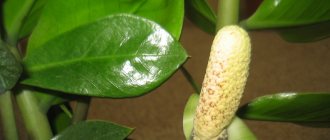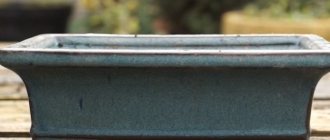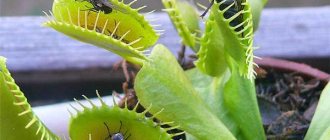A lemon tree on the windowsill is a real decoration of the house. In addition to beautiful shiny dark green foliage and a spreading crown that pleases the eye, it can boast that it bears fruit well at home.
Freshly picked indoor lemons are much tastier and healthier than store-bought ones, so this plant has double benefits - both aesthetic and practical.
Lemon varieties growing at home
However, not all types of lemons are suitable for home cultivation. In order for the tree to take root well, bloom and bear fruit, you should choose one of the specially bred varieties:
- Mayer, meyer or Chinese dwarf is the most common, unpretentious variety. It is distinguished by its small growth (up to 1 m), dense beautiful foliage and small, but sweet and juicy round-shaped fruits.
- Novogruzinsky and Kursky are tall (up to 2 m) varieties. They require more careful attention and care. They bear fruit more often. The fruits are large and fragrant.
- Pavlovsky is an unpretentious bush-like plant of medium height (about 1.5 m) with several trunks.
- Maikopsky is a medium-sized (1.5 m) variety with thin-skinned elongated fruits.
- Eureka is a fast growing variety. It produces fruit with a thick skin and a very sour taste.
- Genoa is a high-yielding dwarf variety. It is distinguished by its tender pulp and aromatic zest without bitterness.
Rest period
Lemon “rests” from October to January . It is believed that if special conditions for winter dormancy are created for the plant at this time (lower temperature to +12 ℃, no lighting), then the need for fertilizers disappears. As a rule, this is not possible in standard houses and apartments; the tree overwinters indoors, which means the amount of fertilizing is reduced to once a month. For this purpose, ready-made complexes for citrus fruits are used.
Such products as “Agricola”, “Citrus”, “Fasco”, “Zdraven” and “Effect” have proven themselves well.
The range of ready-made fertilizers is quite wide
Lemon care at home
In general, lemon is not a very capricious plant. It can be grown in a fairly wide range of temperatures. However, in order to achieve flowering and fruiting, it is necessary to follow the rules of care somewhat more strictly.
Lighting
Like many plants, lemon prefers bright, but diffused sunlight. If the pot is on the windowsill, on summer days it needs to be shaded or moved deeper into the room to avoid sunburn.
In winter, you can make up for the lack of lighting with ultraviolet lamps.
The plant does not like it when the light changes direction, especially during flowering, and may react by dropping flowers and buds. Therefore, it is not recommended to frequently turn the pot or move it to another place.
Temperature
Indoor lemon is not very picky about the room temperature - the main thing is that it does not go beyond +15...+27 °C. In winter, the plant can be kept in a cooler room, but not below +5 °C. Under such conditions, the tree falls into suspended animation without shedding its leaves.
The main requirement is the absence of sudden temperature changes. Lemon does not tolerate them and can drop all its leaves.
Not recommended:
- radically ventilate the room using an open window, exposing the plant to a draft;
- move the pot from a warm room to a cool one or vice versa;
- with the first autumn cold, immediately bring it into the warmth from the street;
- If you buy a plant in a store in winter, you will have to carry it in the cold.
Excessive heat does not benefit the tree in the spring, when it is about to bloom. During this period, the optimal air temperature is +14...+18 °C, otherwise flowering may not occur or the already formed buds risk falling off.
Air humidity
Citrus trees are moisture-loving. For full growth they require air humidity of at least 60%. A room humidifier, a decorative fountain, or simply expanded clay saturated with water on the tray of a pot will help provide it. In this case, you need to ensure that the water does not stagnate and cause rotting of the roots.
Watering
Citrus trees need abundant and timely watering during the period of active growth - spring and summer. In autumn and winter, the frequency is reduced, observing the condition of the soil.
If the plant is dormant in winter, water only occasionally with a small amount of water to prevent the soil from completely drying out. To do this, use settled or filtered water slightly warmer than room temperature. Cold weather can cause root rot. The plant will also benefit from melt or rain water.
Top dressing
They begin to feed the plant in March, after emerging from hibernation and with the beginning of the active growth phase. To do this, alternate organic and mineral fertilizers, adding them to the water for irrigation approximately once every two weeks. In November, feeding is stopped - in winter the plant does not need it.
Features of transplantation
For the first few years of its life, a young lemon is replanted every year. For mature plants, once every three to four years is enough, subject to annual replacement of the top layer of soil.
The optimal time is early spring, before flowering begins, or autumn.
When choosing a pot, remember that the container should not be too large - if there is too much free space, the plant directs its energy to growing roots rather than flowering. In addition, the risk of rotting is higher in spacious tubs.
Transplantation is done using the transshipment method - the roots are carefully removed along with the earthen lump, without damaging it, and placed in a new pot with a layer of drainage (for example, expanded clay) at the bottom. The trunk is not buried - the ground level must remain the same. The free space is filled with fresh substrate.
Earth mixture
The soil for growing lemons is light, neutral or slightly acidic. An earthen mixture for citrus fruits corresponds to these characteristics.
If desired, you can mix it yourself: take two parts of turf soil, one each of humus and leaf soil, and one each of sand and peat.
Crown formation
To ensure that the tree branches grow evenly in all directions, it is recommended to rotate the pot by about 30 degrees every few days. This cannot be done if buds appear on the plant - a change in the direction of light can lead to their falling off.
Crown formation begins when the lemon is one year old. To do this, the top of the tree is cut off with a sharp pruner, leaving a trunk 20 cm high. After this, side shoots appear. They are also pruned after another year so that they branch more strongly.
Pruning not only improves the appearance of the plant, it also promotes good fruiting. But plant growers do not recommend allowing the tree to bloom until the crown formation is complete.
In adult fruit-bearing plants, it is advisable to remove the shoot from which the fruit is plucked - it will no longer branch.
Flowering and pollination
The flowering process takes a lot of energy from the plant. To help it successfully begin to bear fruit, it is necessary to carefully care for it at this time.
One of the conditions is a decrease in the number of flowers on the tree. The younger it is, the less fruit it can grow. Therefore, during the first flowering period, it should not be allowed to have more than four ovaries - the rest must be removed. With each subsequent flowering, the number of fruits can be increased by two.
Pollination is a process necessary for fruit set. Under natural conditions, it occurs with the help of insects. You can easily do this at home with a regular brush, carefully transferring pollen from flower to flower.
Description of the plant
Lemon (Citrus limon) is a small fruit-bearing, evergreen tree belonging to the genus Citrus, family Rutacea and subtribe Citrus (Citreae).
The first written mentions of the lemon tree and its unusual fruits date back to the 12th century AD. Chinese and Indian scientists of that time mentioned him in their works. Therefore, the subtropical regions of these countries are considered to be the birthplace of this plant.
But the origin of lemon remains a mystery to this day, since this plant does not exist in the wild. Research indicates that the tree is a hybrid, likely derived from wild bitter orange and citron. The plant formed as a result of the merger of two citrus fruits began to develop independently and is now distinguished as an independent subspecies.
Street lemons do not exceed eight meters in height. Home and greenhouse specimens can grow up to three meters. The lifespan of a tree is 40-50 years. The main trunk of the tree and its branches are covered with bark. Young shoots have purple, red or green bark and may produce small spines. With age, the bark darkens and cracks. The thorns disappear.
Despite the simple appearance of the leaf, biologists classify lemon leaves as complex. The fact is that the lemon petiole and the leaf blade are not separate parts of the plant, but one whole. Simply, as a result of hybrid changes, these parts were modified and the connecting lobes disappeared. Therefore, the leaf lobe falls off first, and the petiole remains on the branch and falls off later, while in simple leaves, the petiole falls off and pulls the leaf blade along with it.
The leaves have the shape of wide ovals, with a glossy surface. The outer part of the leaf is dark green, and the outer part is lighter.
The tree blooms beautifully with delicate white flowers with a subtle pleasant aroma. After flowering, an ovary forms and an oval yellow or orange fruit, also called “lemon,” ripens.
All parts of the tree are saturated with substances of value. So the entire lemon (from the rhizome to the seeds of the fruit) contains lemon essential oil, which determines the aroma emanating from the tree. The fruits contain organic acids, sugar, vitamins, rutin, carotene and much more.
Lemon has become widespread in many areas. It is used in cooking, cosmetology, pharmaceuticals and light industry.
Rules for growing lemon fruits
The development and ripening of fruits on a lemon tree takes from 7 to 9 months. During this period, several rules must be observed:
- avoid temperature changes;
- do not turn or move the flower pot again;
- Do not trim stems or leaves.
The foliage of the tree plays a very important role in the ripening of lemons. It is she who provides them with carbon dioxide and nutrients. It is believed that at this time at least ten leaves should grow on the plant for each fruit.
Ripe lemons are picked one and a half to two months after formation. If not harvested on time, the skin will become thick and rough, and the flesh will become dry.
Preparing for the rest period
Starting from August, the application of nitrogen fertilizers is completely stopped, potassium and phosphorus are fed, which will strengthen the plant and prepare it for the dormant period (this is their second, no less important function). Root feeding should be alternated with foliar feeding (foliar spraying). For each method, the concentrations of the solutions are different. How to prepare them correctly is detailed in the instructions for the drug.
Some gardeners believe that it is in the last month of summer that closer attention should be paid to the prevention of fungal diseases by adding manganese, while others recommend watering and spraying lemons with a faint pink solution of potassium permanganate every month.
It is important that mineral complexes contain the necessary trace elements. When buying ready-made mixtures, you should carefully study their composition
Reproduction of indoor lemon
Indoor lemons are propagated by seeds and cuttings. Both methods are quite successful, but sowing is more labor-intensive.
Regardless of what variety you need to grow, you can use the seeds of regular store-bought lemons. You should choose the largest ones. You can then follow the instructions:
- Immediately after extraction, soak the seeds for several hours in a growth stimulator solution.
- Prepare small containers with holes in the bottom and a layer of drainage.
- Fill the containers with soil - the same as for adult plants.
- Plant one seed in each pot, deepening them 2 cm.
- Cover with film or cut plastic bottles and place in a warm (not lower than +18 °C) place.
- Ventilate and spray from time to time. Water only when there are signs of drying out of the soil.
It must be taken into account that not all seedlings will sprout. Germination may take two to four weeks after planting. When four leaves form on the sprouts, you can transplant them into a pot.
When propagated from seed, plants lose all varietal characteristics and will not bear fruit. In order for them to turn into full-fledged fruit trees, it is necessary to graft against fruit-bearing lemon.
An easier way is to propagate an adult tree by cuttings. They can be taken from flower growers who grow lemons at home, or received by mail by ordering from an online store.
A suitable cutting is 8-12 cm long and has at least three buds. The cut should be oblique, at a 45-degree angle. The bottom leaf needs to be cut off and the remaining leaves shortened by half.
Planting is done step by step:
- Prepare a pot of the required size with drainage holes, but put a layer of expanded clay at the bottom and fill it with soil.
- The cut of the cutting is treated with a growth stimulator.
- Place the seedling vertically in soil of a standard composition for citrus fruits, deepening the stem by 1-1.5 cm.
- Place in a warm place and spray regularly. Watering is carried out only when the soil dries out.
Rooting of cuttings is usually completed in a month or a month and a half.
Fertilizer
Caring for varietal lemons at home includes regular fertilizing, since they receive nutrition only from water and a limited amount of soil. For normal growth and development, it needs many elements - nitrogen is necessary for growth, potassium and phosphorus help set, ripen fruits, ripen wood, calcium, magnesium, manganese, fluorine, iron, other elements are necessary for full vegetation. Therefore, the older and larger the plant, the more often it is fed.
Root feeding is usually carried out simultaneously with watering, but if necessary, the leaves well absorb the elements they need from foliar feeding (spraying).
Among organic fertilizers, lemon responds well to watering with an infusion of ash, a solution of infusion of manure (especially horse manure), only it needs to be diluted very strongly (tenfold). Some gardeners use infusions of herbs - quinoa, birch. The crushed grass is poured with water, left for five days, then the infusion is filtered, the same amount of water is added, and watered a few hours after the main watering.
Superphosphate is usually recommended for mineral fertilizers; 50 g of the substance is dissolved in 1 liter of water, but before use it is better to dilute it with the same amount of water. Ammonium nitrate is used in the same way, only 30 g of the substance is taken.
Specialized stores offer ready-made mixtures for fertilizing citrus fruits; you can use them, dilute them according to the instructions, but then add water, that is, reduce the concentration, because all these fertilizers are designed for the maximum size of an adult plant.
Young plants are fed rarely - every month to a month and a half, but adults can be fed every 10-15 days, it all depends on the condition of the tree and its growth rate. The appearance will tell you whether feeding is needed. If you overfeed the plant, the situation will be difficult to correct; it is better to wait a little and make sure that fertilizers are necessary.
Pests and diseases of indoor lemon
The disadvantage of citrus trees is their susceptibility to a large number of diseases, some of which are useless to fight.
| Disease | Signs | Treatment |
| Sheet mosaic | Curling of leaves, light specks, stunted growth. | Isolate from other plants, provide proper care and feeding. In case of severe infection, destroy the plant. |
| Citrus cancer | Deformation and dark spots on leaves and fruits, growth arrest. | Destroy the plant. The disease has no cure. |
| Tristeza | Unreasonable leaf fall, brown spots on the trunk and branches. | |
| Melseko | Drying that starts at the tips of the leaves and spreads to the branches. Leaf fall. Redness on cut branches. | |
| Gomoz | Oblong dark spots on the trunk and branches, often covered with cracks, from which a yellow resinous substance oozes. | Remove affected areas and treat with a fungicidal preparation. Repeat treatment until the spots disappear completely. |
| Anthracnose | Fading and falling leaves. Reddish spots on fruits. | Remove all affected parts, treat the plant with Fitosporin or Bordeaux mixture. |
| Scab | Yellow spots on the leaves, subsequently swelling and acquiring a pinkish color. Orange spots on fruits. | |
| Root rot | Leaf fall, smell of rot, darkening and softening of roots. | Carry out an unscheduled transplant. Clear the root system of soil, cut off damaged roots and treat with crushed activated carbon. Completely replace the soil. |
Sometimes the reason for a plant’s poor health lies in an attack by pests.
| Pest | Signs | Treatment |
| Shchitovka | Brown tubercles on leaves and stems, sticky coating, wilting. | Treat the plant with soapy water and rinse in the shower. Repeat after a few days. |
| Aphid | Deformation of leaves, sticky coating, visible accumulations of insects. | Cut off affected leaves. If the stems are infected, treat them with garlic infusion. In advanced cases, treat with insecticides. |
| Root aphid | Stunting of growth, wilting and yellowing of foliage. | Remove the roots from the pot, treat them with garlic infusion or an insecticidal preparation, and replant them in new soil. |
| Spider mite | Thin sticky web on young shoots. | Every five days, spray the plant with a solution of boric acid. |
To prevent the lemon tree from being infected by parasites and diseases, you need to maintain the temperature regime, maintain indoor air humidity at the required level, systematically fertilize the soil and avoid excessive or too little watering.











